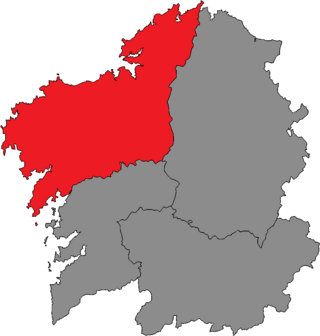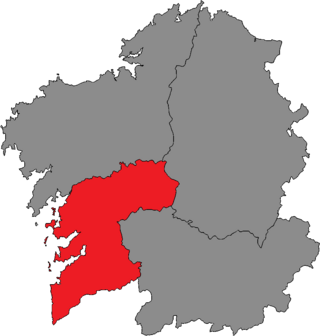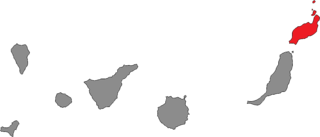
The 2005 Basque regional election was held on Sunday, 17 April 2005, to elect the 8th Parliament of the Basque Autonomous Community. All 75 seats in the Parliament were up for election.

The 1994 Basque regional election was held on Sunday, 23 October 1994, to elect the 5th Parliament of the Basque Autonomous Community. All 75 seats in the Parliament were up for election.

The 1986 Basque regional election was held on Sunday, 30 November 1986, to elect the 3rd Parliament of the Basque Autonomous Community. All 75 seats in the Parliament were up for election.

The 1984 Basque regional election was held on Sunday, 26 February 1984, to elect the 2nd Parliament of the Basque Autonomous Community. All 75 seats in the Parliament were up for election.

The 1980 Basque regional election was held on Sunday, 9 March 1980, to elect the 1st Parliament of the Basque Autonomous Community. All 60 seats in the Parliament were up for election.

Gipuzkoa is one of the three constituencies represented in the Basque Parliament, the regional legislature of the Basque Autonomous Community. The constituency currently elects 25 deputies. Its boundaries correspond to those of the Spanish province of Gipuzkoa. The electoral system uses the D'Hondt method and a closed-list proportional representation, with a minimum threshold of three percent.

Biscay is one of the three constituencies represented in the Basque Parliament, the regional legislature of the Basque Autonomous Community. The constituency currently elects 25 deputies. Its boundaries correspond to those of the Spanish province of Biscay. The electoral system uses the D'Hondt method and a closed-list proportional representation, with a minimum threshold of three percent.

A Coruña is one of the four constituencies represented in the Parliament of Galicia, the regional legislature of the autonomous community of Galicia. The constituency currently elects 25 deputies. Its boundaries correspond to those of the Spanish province of A Coruña. The electoral system uses the D'Hondt method and a closed-list proportional representation, with a minimum threshold of five percent.

Lugo is one of the four constituencies represented in the Parliament of Galicia, the regional legislature of the autonomous community of Galicia. The constituency currently elects 14 deputies. Its boundaries correspond to those of the Spanish province of Lugo. The electoral system uses the D'Hondt method and a closed-list proportional representation, with a minimum threshold of five percent.

Ourense is one of the four constituencies represented in the Parliament of Galicia, the regional legislature of the autonomous community of Galicia. The constituency currently elects 14 deputies. Its boundaries correspond to those of the Spanish province of Ourense. The electoral system uses the D'Hondt method and a closed-list proportional representation, with a minimum threshold of five percent.

Pontevedra is one of the four constituencies represented in the Parliament of Galicia, the regional legislature of the autonomous community of Galicia. The constituency currently elects 22 deputies. Its boundaries correspond to those of the Spanish province of Pontevedra. The electoral system uses the D'Hondt method and a closed-list proportional representation, with a minimum threshold of five percent.

Menorca is one of the four constituencies represented in the Parliament of the Balearic Islands, the regional legislature of the Autonomous Community of the Balearic Islands. The constituency currently elects 13 deputies. Its boundaries correspond to those of the island of Menorca. The electoral system uses the D'Hondt method and a closed-list proportional representation, with a minimum threshold of five percent.

El Hierro is one of the seven constituencies represented in the Parliament of the Canary Islands, the regional legislature of the Autonomous Community of the Canary Islands. The constituency currently elects 3 deputies. Its boundaries correspond to those of the island of El Hierro. The electoral system uses the D'Hondt method and a closed-list proportional representation, with a minimum threshold of fifteen percent in the constituency or four percent regionally.

Fuerteventura is one of the seven constituencies represented in the Parliament of the Canary Islands, the regional legislature of the Autonomous Community of the Canary Islands. The constituency currently elects 8 deputies. Its boundaries correspond to those of the island of Fuerteventura. The electoral system uses the D'Hondt method and a closed-list proportional representation, with a minimum threshold of fifteen percent in the constituency or four percent regionally.

Gran Canaria is one of the seven constituencies represented in the Parliament of the Canary Islands, the regional legislature of the Autonomous Community of the Canary Islands. The constituency currently elects 15 deputies. Its boundaries correspond to those of the island of Gran Canaria. The electoral system uses the D'Hondt method and a closed-list proportional representation, with a minimum threshold of fifteen percent in the constituency or four percent regionally.

La Gomera is one of the seven constituencies represented in the Parliament of the Canary Islands, the regional legislature of the Autonomous Community of the Canary Islands. The constituency currently elects 4 deputies. Its boundaries correspond to those of the island of La Gomera. The electoral system uses the D'Hondt method and a closed-list proportional representation, with a minimum threshold of fifteen percent in the constituency or four percent regionally.

Lanzarote is one of the seven constituencies represented in the Parliament of the Canary Islands, the regional legislature of the Autonomous Community of the Canary Islands. The constituency currently elects 8 deputies. Its boundaries correspond to those of the island of Lanzarote. The electoral system uses the D'Hondt method and a closed-list proportional representation, with a minimum threshold of fifteen percent in the constituency or four percent regionally.

La Palma is one of the seven constituencies represented in the Parliament of the Canary Islands, the regional legislature of the Autonomous Community of the Canary Islands. The constituency currently elects 8 deputies. Its boundaries correspond to those of the island of La Palma. The electoral system uses the D'Hondt method and a closed-list proportional representation, with a minimum threshold of fifteen percent in the constituency or four percent regionally.

Tenerife is one of the seven constituencies represented in the Parliament of the Canary Islands, the regional legislature of the Autonomous Community of the Canary Islands. The constituency currently elects 15 deputies. Its boundaries correspond to those of the island of Tenerife. The electoral system uses the D'Hondt method and a closed-list proportional representation, with a minimum threshold of fifteen percent in the constituency or four percent regionally.

The next Basque regional election will be held no later than Sunday, 21 May 2028, to elect the 14th Parliament of the Basque Autonomous Community. All 75 seats in the Parliament will be up for election.



















